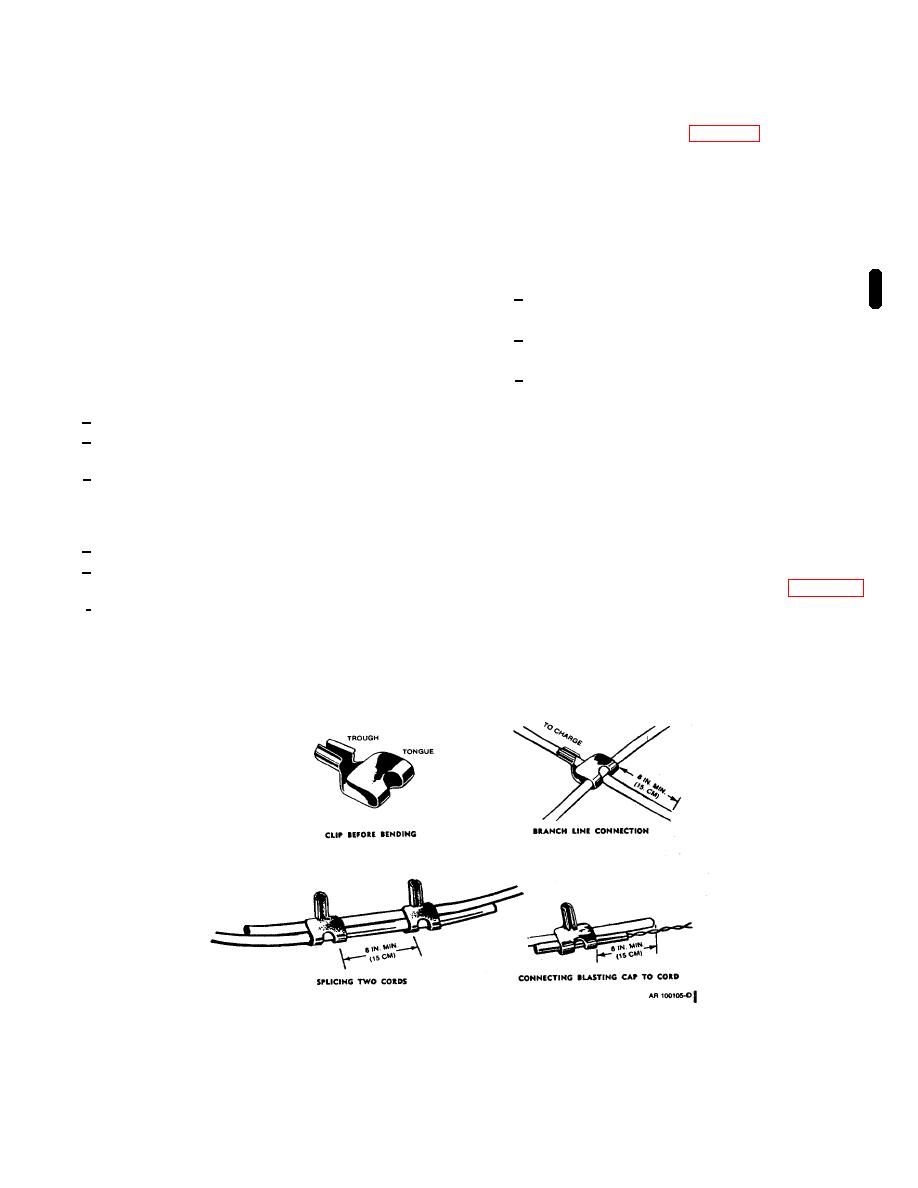 |
|||
|
|
|||
|
|
|||
| ||||||||||
|
|
 TM 9-1300-277
5-14. DETONATING CORD CONNECTIONS
5-12. USE OF DETONATING CORD
Detonating cord is used to initiate explosive
Detonating cord clips (fig. 5-15) or square knot
pulled tight are used to splice the ends of detonating
charges as a component of an electric or nonelectric
cord. The tongues of the clips are bent firmly over both
firing system. If the nonelectric firing system is being
strands and the connection is made secure by bending
used with more than one charge, detonating cord is
the trough end of the clip back over the tongue.
required to assure simultaneous firing. of the charges.
Detonating cord is useable underground or underwater.
The preferred method
of
connecting
the
The initiation of the detonating cord is accomplished by
detonating cord is as follows:
a blasting cap above ground or water.
5-13.
SAFETY PRECAUTIONS FOR DETONATING
a. Deleted.
CORD
b. Overlap the newly cut free ends by 18 inches.
In addition to the general safety requirements,
the following precautions will be strictly adhered to when
c. Secure the cords together with detonating cord
using detonating cord.
clips at least 6 inches from each end of the free ends
and at least 6 inches from each other.
a. Avoid kinks and sharp bends.
b. Handle with special care to avoid breaking
NOTE
covering or explosive train.
The 6-inch overlap of each free end
c. Lay lines out as straight as possible but not
is to keep any moisture absorbed,
stretched taut. Detonating cord forms a spiral as it is
after the splice is made, from
unwound from spool and must be' straightened out
affecting the overlap area between
carefully before firing to avoid misfire.
the two clips.
d. Do not remove any part of outer covering.
e. When making branch line connections, ensure
If a knot is used, at least a 15 centimeter (6 inch-
that detonating cords touch only at connections.
lengths) should be left free at both sides (fig. 5-16).
f. The angle formed by branch line and cap end of
When fabric is used to cover the detonating cord, the
main line will not be less than 90 degrees from the
fabric must not be removed. The knot may be placed in
direction in which the blast is coming. At a smaller
water or in the ground but the cord must be detonated
angle, branch line may be blown off main line without
from a dry end.
being detonated.
Figure 5-15. Connections using M1 detonating cord clip.
Change 3
5-13
|
|
Privacy Statement - Press Release - Copyright Information. - Contact Us |